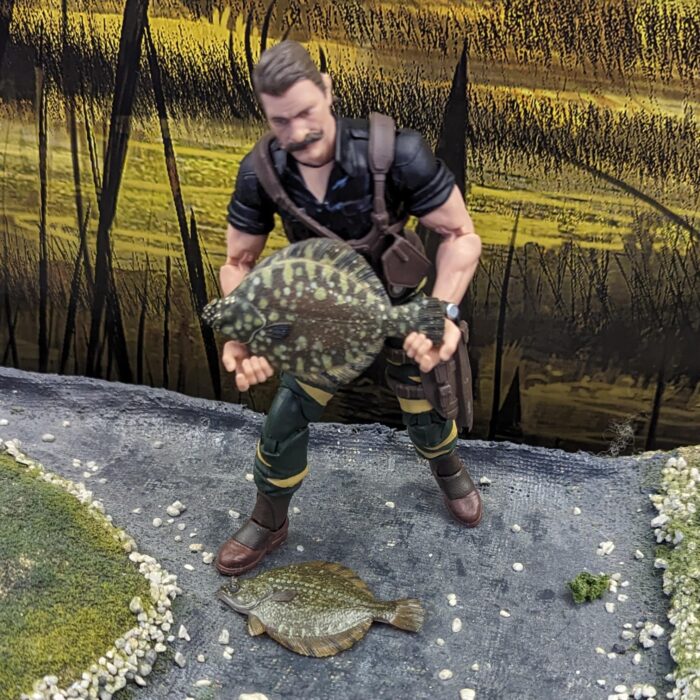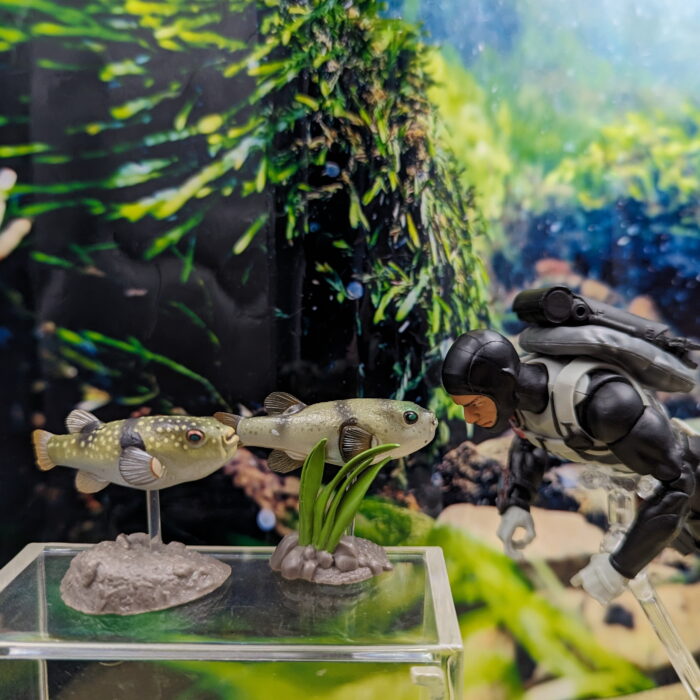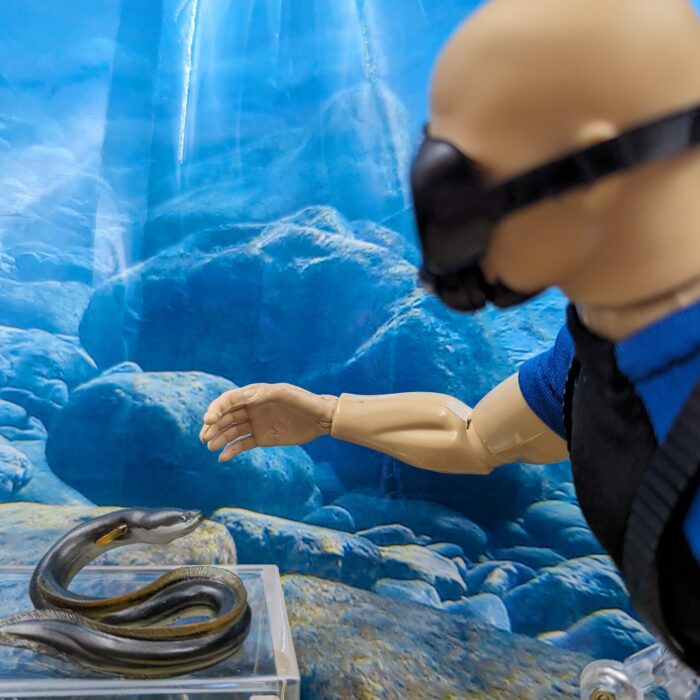This figure recently came up for my daily ‘Museum’ post on the Animal Toy Forum. Because of the dynamic nature of the sculpt I had to take multiple pics before I decided on the one I liked the most for that post. As such, I thought I would put those images to use and highlight the figure on the Blog!
Brand: Yujin
Starry Flounder (Freshwater Fishes Book 2, first AND second release by Yujin)

This figure is the Starry Flounder (or in Japanese, Kawagarei, among other names), Platichthys stellatus , model 31 and number 161 from the second series—and, sadly, THE LAST FIGURE IN THE SERIES! Which means that until/unless I get my hands on a representative of the ones I’m missing, or a few rare variants, this is the end of the line2 for the Yujin Freshwater Fishes Books 1 and 2.
Grass Puffer (Freshwater Fishes Book 2, first AND second release by Yujin)

This figure is the grass puffer (AKA Sunafugu, meaning sand puffer in Japanese), Takifugu niphobles, model 30 and number 15 from the second series. This is the only pufferfish in the whole series, a family of immediately recognizable fish well-known for taking in air or water to make themselves much larger, as a defense mechanism.
Barred Mudskipper (Freshwater Fishes Book 2, first AND second release by Yujin)

This figure is the Barred Mudskipper, Periophthalmus argentilineatus (also called the silver-lined mudskipper, which is literally the species name), model 29 and number 14 from the second series. Once again, I eventually got my hands on both versions, with the second release first. This is the second Yujin goby, this time as the representative of the mudskipper subfamily (Oxudercinae, family Gobiidae) in the series.
Amur Goby (Freshwater Fishes Book 2, second release by Yujin)

This figure is the Amur Goby, Rhinogobius brunneus, model number 28 and number 13 from the second series. This is the only Yujin true goby (Gobiinae, family Gobiidae) in the series. They are quite small fish, generally living on the bottoms of freshwater streams and brackish estuaries, hunting small invertebrates.
Roughskin Sculpin (Freshwater Fishes Book 2, first AND second release by Yujin)

This figure is the Roughskin Sculpin (for reasons that are unclear, the Japanese name Yamanokami apparently translates to “God of the Mountain!”), Trachidermus fasciatus, sculpt number 27 and number 12 from the second series. This is the first and only sculpin (Cottidae) in the Yujin series.
Bluegill Sunfish (Freshwater Fishes Book 2, second release by Yujin)

This figure is the bluegill sunfish (or just bluegill), Lepomis macrochirus, model number 26 and figure number 11 from the second series. Sunfish are medium-sized relatives of the largemouth and smallmouth bass (Centrarchidae) that natural occurred in the US in many areas east of the Rocky Mountains (and no relation to the ocean sunfish Mola).
Largemouth Bass (Freshwater Fishes Book 2, second release by Yujin)

This figure is the Largemouth Bass, Micropterus salmoides, model number 25 and figure 10 from the second series. These are large freshwater bass naturally found in the Mississippi River system of North America. However, they are popular sport fish and have been released in many parts of the world, including, of course, Japan.
Northern Snakehead (Freshwater Fishes Book 2, first and second release by Yujin)

This figure is the Northern Snakehead, Channa argus , model 24 and figure 9 from the second series. These large, strictly freshwater predators are naturally found in the Korean Peninsula, China and Russia. Given the northern range, it is not surprising that they are cold tolerant, and have since been introduced to several other places including the US, Japan and parts of Europe (so far Canada has kept them out, but they are heading to the Great Lakes, so we’ll see how that goes) edit–at least no established populations since this was written.
Japanese Eel (Freshwater Fishes Book 2, second release by Yujin)

This figure is the Japanese eel (nihon unagi in Japan), Anguilla japonica, model sculpt 23 and number 8 from the second series. This is the only freshwater eel found in Japan, although it is found throughout Eastern Asia as far south as Vietnam. Like many other freshwater eels, the Japanese Eel is catadromous, spawning and hatching at sea but living much of their life in freshwater habitats and brackish estuaries.
Japanese Spined Loach (Freshwater Fishes Book 2, first and second release by Yujin)

This figure is the Japanese Spined Loach (or Japanese striped loach), Cobitis biwae , model 22, and number 7 from the second series. This is a small, long-bodied loach endemic to Japan, there are numerous potential subspecies but no distinction was made with the model. There are actually a number of similarly-patterned loach species in many parts of Japan, but so far this is the only species specifically identified on figures.





